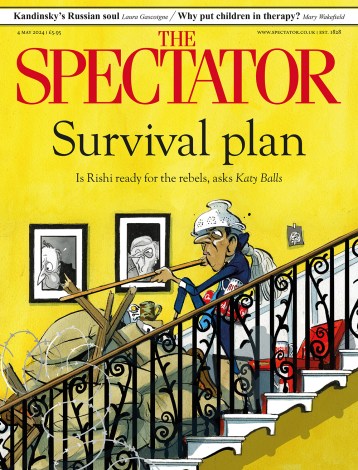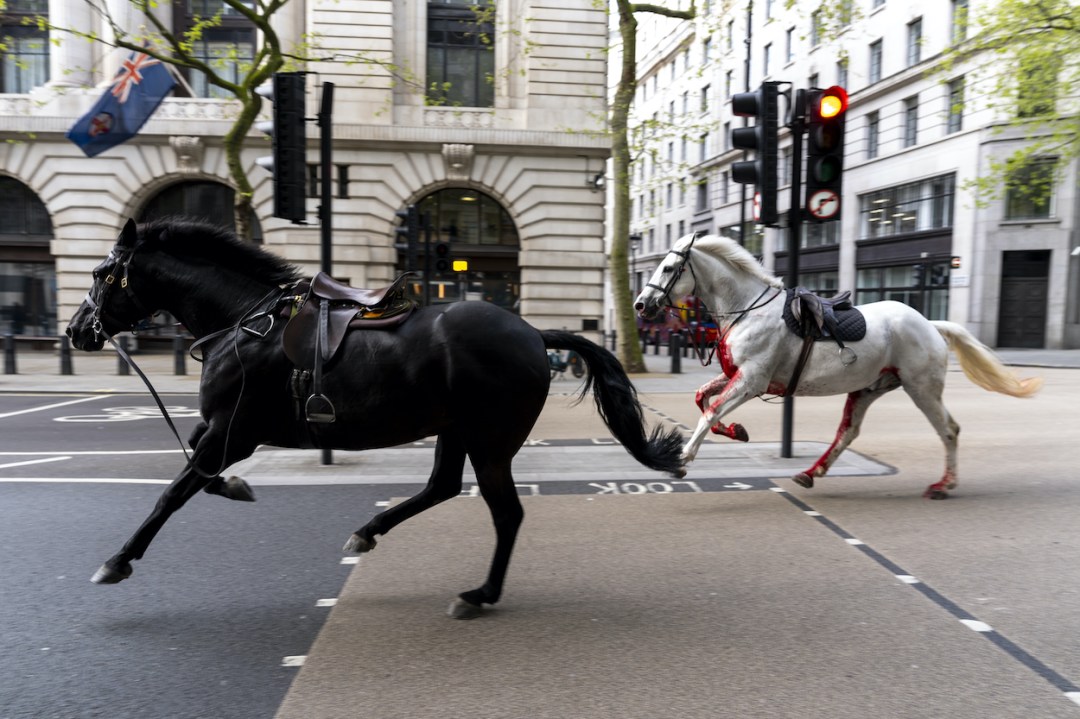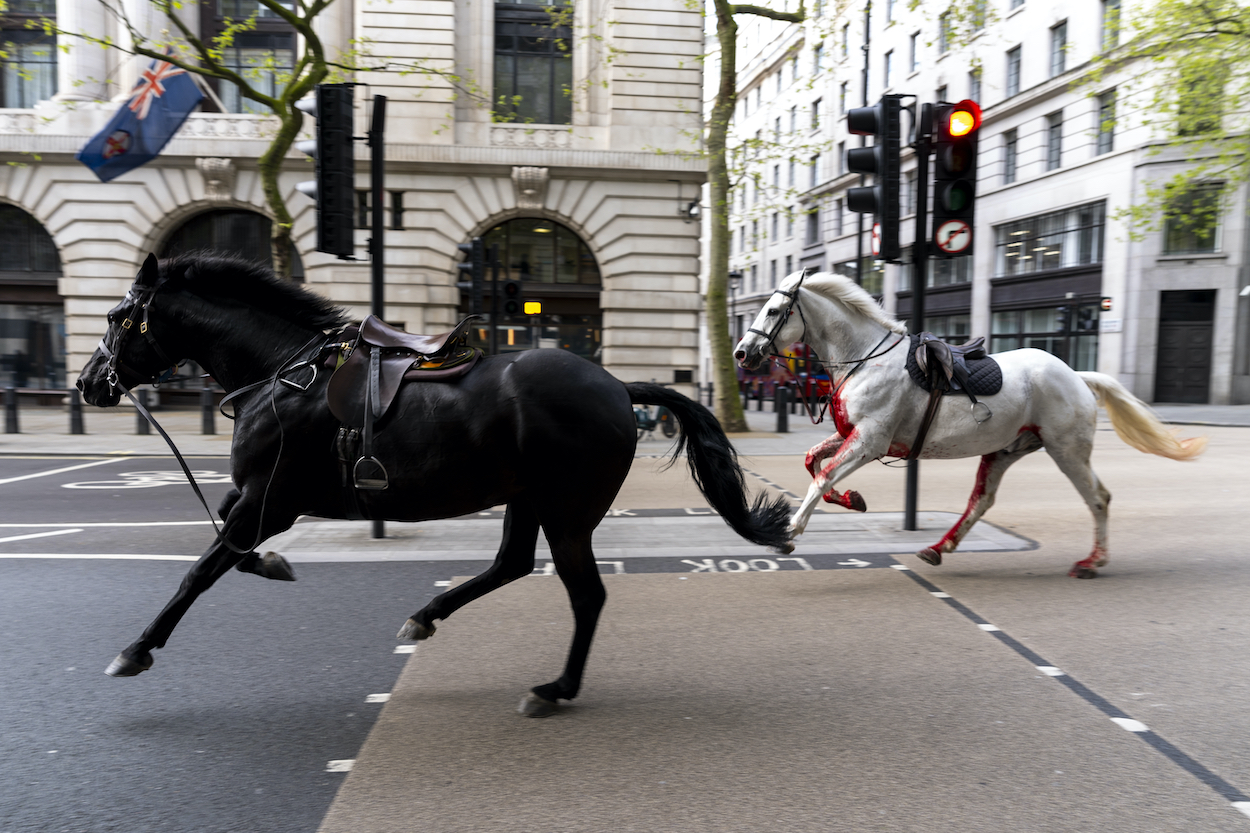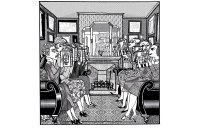Churchill had his black dog tailing him around. I used to have black horses galloping through my head. They careered around out of control, rendering me so anxious that I couldn’t sleep the night before I was due to heave myself into the saddle as a civilian support rider for the Household Cavalry. So the sight of blood-spattered horses from the Household Regiment bolting through London this week dredged up some unwelcome memories.
Red London buses and black taxi cabs flashed by in a blur. I really thought I was going to die
For six months, I was a member of the coveted, informal club of civilians who got to exercise the horses of this exclusive regiment in Hyde Park. There’s no formal application process: you chat up an officer, go for a riding test, then turn up at Knightsbridge Barracks at 6 a.m. kitted out in tweed jacket, tie, breeches and boots, saddle one of the famous ‘Cav Blacks’ then head off along the park’s bridleway, Rotten Row, looking like something out of the Pony magazine annual from 1953. It might sound bliss. But the reality was rather different. It was the Duke of Edinburgh who described horses as ‘the great levellers’. Well, there’s no horse so levelling as a Cav Black.
‘Do you want a bucker or a bolter?’ I was asked on my first morning. ‘Errrr… um… a bucker, I think,’ I squeaked – quickly computing that getting decked in the park would likely have a better outcome than trying to steer a runaway 17 hand horse away from six lanes of rush-hour traffic on Park Lane.
My first morning ride with other civilians passed off without incident. That was possibly the only one. One morning I arrived late and a cheery NCO legged me up onto the last available horse in my troop – the most enormous equine I’ve ever sat on. He slapped my steed on the rump and advised me to ‘hold on tight’. Half-way round, as we turned for home, my horse took off. Now I have been on runaway horses before: it’s not fun, but if you’re a reasonably competent rider, you can usually get them back under control by turning them in smaller and smaller circles.
No chance with this four-legged friend. He had a mouth like concrete (the Household Cavalry horses wear very heavy bits when on duty, but we rode in civilian tack). Even standing in my stirrups, using my entire body weight against him made not a jot of difference. Red London buses and black taxi cabs flashed by in a blur. I really thought I was going to die.
‘Don’t worry!’ yelled one of my fellow support riders. ‘He always pulls up when he gets past Hyde Park Corner.’ And as we passed Nic Fiddian-Green’s sculpture, ‘Horse at Water’, the pace did indeed slacken a little. Back at barracks, I slithered off, collapsing in a pathetic little heap on the ground, arms and legs like chewed string.
‘How was that then?’ asked the bastard NCO with a wink. These horses have to carry 18 stone when on duty on Horseguards Parade and at state occasions, about five stone of which is the tack. So put a slight girl in the saddle and it’s like trying to manoeuvre the Ark Royal with your little finger.
On another occasion (this time riding a notorious ‘bucker’), my horse bucked repeatedly (known as ‘broncing’) down almost the entire length of Rotten Row. To save my own arse, I’m ashamed to say that I stopped him by turning into a line of young troopers, scattering their mounts. Several fell off. Amazingly, I stayed in the plate, as horsey people say.
‘Well sat!’ called out my riding companion that morning, the former model and consummate horsewoman, Tricia Ronane, when she caught us up. ‘I lost count after 27 bucks.’
I don’t think the elegant Tricia ever ate dirt on Rotten Row but I knew it was only a matter of time until I had a really nasty fall. And so, I stopped setting my alarm for 5 a.m. I was getting married that summer (not, I stress, to the officer I’d once regretfully chatted up) and didn’t fancy being wheeled up the aisle in plaster. Another friend wasn’t so lucky. She recalled: ‘I sat bucks all the way down Rotten Row from the barracks to the French Embassy, at which point I came flying off and then that brute “Vixen” galloped over me leaving me gargling my own blood in the sand. I will never forget the sheer weight and the feeling of ribs giving way.’ The friend was left with seven broken ribs and a punctured lung.
Because of their central London location, the horses are stabled 24/7. Many of them are an Irish-draught-thoroughbred cross – the sort of breeding often found in elite eventing horses. They are fit and well-fed, perhaps over-fed, to maintain their glossy sheen and condition, and under-exercised – all of which means they can be explosive to ride. But they don’t just misbehave for their civilian riders. At pretty much every state occasion, one of the Cav Blacks will disgrace itself – bin its rider and head back to barracks for, if not tea and medals, then an early hay net.
Writing for the Field a few ago, the former head of the Household Division, Major General Sir Evelyn Webb-Carter, recalled a horse called Boomer (named after a well-known officer in the regiment) careering up the Mall at the king’s first wedding, in 1981. He overtook the entire procession, galloped through Trafalgar Square and came to rest in Horse Guards, where he took a draught of water – then cantered back to join his chums in the escort.
At the wedding of the Prince and Princess of Wales in 2011, a Cav Black called Jeremiah misbehaved and bolted home down Whitehall (minus his rider). Standing on Horse Guards for hours, these horses also get very bored. A horse called Obelisk had to be taken off duty after he began to amuse himself by keeping back a little of his breakfast in his cheek. Once on duty, he’d let the feed trickle out, wait for a pigeon to fly down – then stamp on it. There were even rumours that the horse once targeted a tourist’s pug.
It doesn’t help matters that many of the soldiers – and even quite a high proportion of the officers – haven’t ridden before joining the regiment. Standards of horsemanship are likely to have improved since women were admitted in 2018 (if you’re a horse-mad teenage girl, an army career is a far more appetising prospect than working a 70 hour week in a show-jumping yard where the accommodation is a static home). But the reality is that many of the soldiers you see astride these big, powerful horses are really quite novice riders.
The commanding officer overseeing this week’s chaos has said that the four horses were spooked when tools on a building site in Belgravia were dropped close by them. It sounds absolutely terrifying and perhaps even the most consummate horsemen and women would have been powerless to prevent the unsightly scenes which followed. I’m only surprised that something like this hasn’t happened before.







Comments
Comments will appear under your real name unless you enter a display name in your account area. Further information can be found in our terms of use.